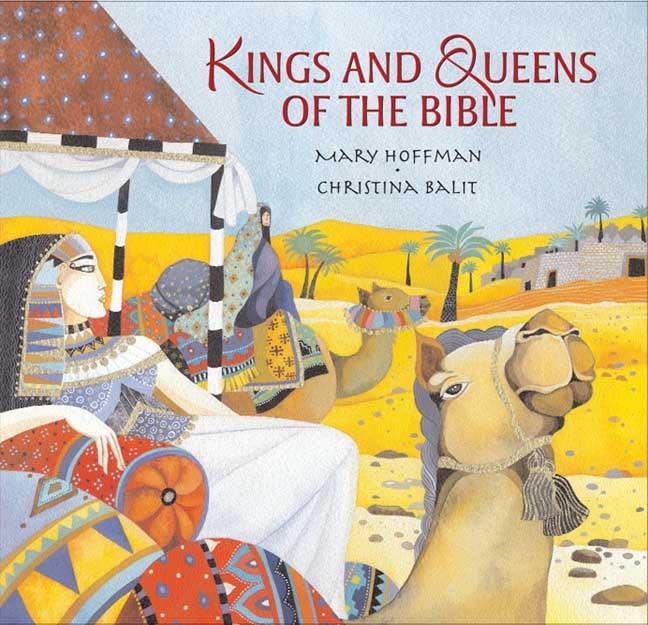
Pharaoh and Moses
King David
King Solomon
The Queen of Sheba
Queen Jezebel
King Belshaar
Queen Ester
About the Kings and Queens
Introduction
“The Old Testament is full of kings and queens, vivid characters who play an important part in the history of the people who came to be called the Jews.
“Some were kings who treated the Jews as slaves, such as the pharaoh of Egypt or King Belshazzar of Babylon. Some were rulers selected by God from among the Chosen People, such as Saul and David
“All the Jews were descendants of the twelve sons of Jacob, who was given the extra name ‘Israel’ by God. Israel was the grandson of Abraham, the man appointed by God to lead His people, and eventually those eople were all known by the grandson’s name: Israelites.
“Jacob’s most famous son was Joseph, who interpreted strange dreams for one of the pharaohs of Egypt, and whose brothers joined him there. After many generations of exile in Egypt, the Israelites followed a new leader, Moses, through the desert for fort years in search of a Promised Land filled with milk and honey.
“When they settled, in the lands around the river Jorday, the twelve tribes had their own territory in a united Israel. But after the death of King Solomon the kingdom was divided and eventually lost
“But before then there were the kings and queen you can rad about in this book–some wise, some brave, some bloodthirty, some promise-breaking, some greedy, some righteous–and all of them larger than life.” Mary Hoffman
About the Kings and Queens
Pharaoh and Moses
“There is not space enough here to tell of all that Moses did in Egypt, or the full details of the plagues. But all those stories are told in the book of Exodus and can be read there.
King David
“The story of Samuel choosing David is in I Samuel 15-16. In the Bible version, Jesse has eight sons, but there is another tradition that David was the seventh, making him the seventh son of a seventh son–always a magical position The other stories of David are in the two books of Samuel.
King Solomon
“Stories of Solomon can be foumd in the first book of Kings.”
The Queen of Sheba
“This story is found in I Kings 10 and II Chronicles 9. Sheba used to be identified with Saba, a country in the southwest of Arabia, roughly where Yemen is today. Modern scholars think it might have been farther north but admit that it makes the fabled voyage of its queen less romantic. The name Balkis, or Bilkis, is not used in the Bible but comes from Arabic tradition. (In the form Balkis it is also used by Kipling in ‘The Butterfly That Stamped’ in his Just So Stories.) The legend about the child of Solomon and the queen says that he might have been King Nebuchadnezzar.
Queen Jezebel
The bloodthirsty story of the queen’s death can be found in the second book of Kings, chapter 9, The story of Naboth’s vineyar and his death is told in I Kings 21.
King Belshazzar
The famous story of King Belshazzar and the writing on the wall can be found in Daniel 5. Daniel is the man who was thrown into the lions’ den. Some traditions hold that the Hebrew writing on the wall was written from top to bottom…There is controversy about the actual identity of Belshazzar’s successor, since Babylon was captured by Cyrus the Great of Persia and not by the Medes.
Queen Esther
“Esther is one of the only two women to have a book of the Bible named after her (the other is Ruth). The name Esther is a variant of Ishtar, the Babylonian goddess. Her Jewish name, Hadassah, means ‘myrtle.’ Ahasuerus has been identified as both Xerxes I (486-465 BCE) and as Artaxerxes II (405-359 BCE). The reason he wanted a new wife was the Queen Vashti had defied him at a banquet when he commanded her to come to him. The feast of Purim is celebrated in March or April.” Hoffman, pg. 31.
Discover more from Jacki Kellum
Subscribe to get the latest posts sent to your email.